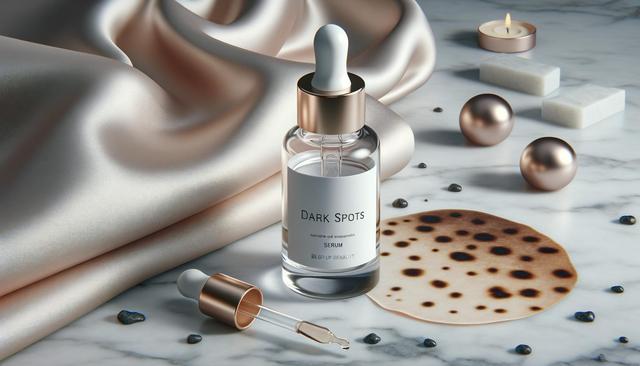Understanding the Causes of Dark Spots
Dark spots, also known as hyperpigmentation, appear when certain areas of the skin produce more melanin than usual. This condition can be triggered by several factors, including prolonged exposure to ultraviolet (UV) rays, hormonal changes, inflammation, and injuries to the skin such as acne or cuts. Melanin is the pigment responsible for the color of our skin, and when it accumulates in one area, it causes discoloration. While anyone can develop dark spots, they are more common in people with medium to darker skin tones because their skin naturally contains more melanin.
Some common types of dark spots include:
- Sun spots (also known as liver spots or age spots)
- Post-inflammatory hyperpigmentation from acne or eczema
- Melasma, often linked to hormonal changes
Identifying the underlying cause is essential for selecting the most effective treatment strategy. Consulting a dermatologist can help determine the source and severity of dark spots, guiding more targeted treatment options.
Topical Treatments for Dark Spots
Topical treatments are often the first line of defense against dark spots. These products work by either reducing melanin production, accelerating skin turnover, or exfoliating the pigmented cells. Several ingredients are widely recognized for their effectiveness in addressing hyperpigmentation.
- Hydroquinone: A skin-lightening agent that decreases melanin production
- Retinoids: Promote cell turnover and prevent melanin from clustering
- Vitamin C: An antioxidant that lightens pigmentation and protects against sun damage
- Niacinamide: A form of vitamin B3 known to reduce pigmentation and improve skin texture
- Azelaic acid: Helps with both acne and pigmentation
When using these products, it’s important to follow directions carefully and be patient, as visible results may take several weeks to appear. Additionally, some individuals may experience mild irritation, particularly with stronger agents like retinoids or hydroquinone. Using a moisturizer and sunscreen alongside these treatments helps protect the skin and support the healing process.
Professional Treatments and Procedures
For more stubborn or widespread dark spots, professional treatments administered by dermatologists or licensed skincare professionals can offer more intensive results. These procedures are often used when over-the-counter products do not achieve the desired outcome.
- Chemical peels: Use acids to exfoliate the outer layers of skin and fade pigmentation
- Microdermabrasion: A mechanical exfoliation technique that removes dead skin cells
- Laser therapy: Targets melanin with focused light energy to break up pigment
- Intense Pulsed Light (IPL): A non-invasive treatment using broad-spectrum light
While professional treatments generally yield faster results, they also come with considerations such as cost, potential side effects, and required downtime. A consultation with a skincare professional can determine the most suitable procedure based on skin type and the nature of the dark spots.
The Importance of Sun Protection
Regardless of the treatment method chosen, sun protection is a non-negotiable part of managing and preventing dark spots. UV exposure is one of the leading causes of melanin overproduction, and without proper protection, dark spots can recur or worsen.
To effectively guard against sun damage:
- Use a broad-spectrum sunscreen with an SPF of at least 30 daily
- Reapply sunscreen every two hours, especially when outdoors
- Wear protective clothing, hats, and sunglasses
- Seek shade during peak sun hours, typically 10 a.m. to 4 p.m.
Sun protection not only helps prevent new spots from forming but also allows current treatments to work more effectively. Even on cloudy days or indoors near windows, UV rays can have an impact, making consistent use of sunscreen a crucial step in any skincare routine targeting hyperpigmentation.
Natural Remedies and Lifestyle Adjustments
In addition to medical and cosmetic treatments, some individuals explore natural remedies to help lighten dark spots. While these approaches may not provide dramatic results, they can be a gentle supplement to other treatments.
- Lemon juice: Contains natural acids that may mildly exfoliate and lighten skin
- Aloe vera: Soothes the skin and may help with pigmentation over time
- Green tea extract: Known for its antioxidant properties
- Licorice extract: Contains compounds that can reduce melanin production
It’s essential to approach natural treatments with caution, as some ingredients can irritate sensitive skin or increase photosensitivity. Always do a patch test and consider checking with a dermatologist before adding new remedies to your routine.
Furthermore, lifestyle choices contribute significantly to skin health. Getting adequate sleep, staying hydrated, managing stress, and eating a balanced diet rich in antioxidants can support overall skin tone and reduce the likelihood of developing new dark spots.
Conclusion: A Holistic Approach to Brighter Skin
Addressing dark spots effectively requires a combination of targeted treatments, professional guidance, and consistent skincare practices. Whether opting for topical products, in-office procedures, or natural remedies, maintaining sun protection and healthy habits is key to achieving and preserving clearer, more even-toned skin. By understanding the causes and options available, individuals can make informed decisions tailored to their unique skin needs.



Leave a Reply